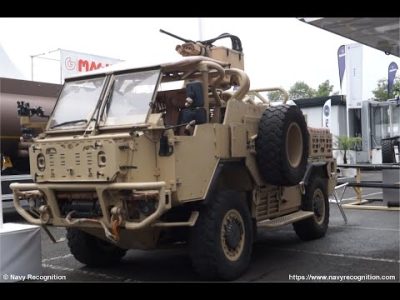Published on 01/13/2020 – Last Updated on 01/13/2020 by OTC
The decks of the Russian ships are painted with a “red lead” rustproofing/anti-corrosive paint. Many nations do this but then topcoat the red lead paint with grey paint for a uniform color. Gray paint is a very effective means to keep a warship from being spotted in a wide variety of situations. However, the Russians just leave the red lead exposed.
Anti-corrosive paint is a composition of corrosion-resistant pigments such as zinc chromate, lead chromate, zinc oxide, zinc dust, zinc chromate, or red lead. Anti-corrosion coating allows added protection of metal surfaces and acts as a barrier to inhibit the contact between chemical compounds or corrosive materials.
Corrosion is a severe problem affecting the life of any element made of steel or iron. Corrosion-resistant coatings protect metal components against degradation due to moisture, salt spray, oxidation or exposure to a variety of environmental chemicals. The anticorrosive paints impede or obstruct the corrosion by reducing the direct access of air and water to the metal.
A warship is composed of 90% steel.

How is an anti-corrosion action successfully carried out on a ship?
An anti-corrosion policy must be taken into account right from the design phase. Designing a ship with a high-performance, anti-corrosion protection and with a low life cycle cost has consequences for the design, structure and construction process. Knowledge of the environment in which the ship will operate and its operating profile is essential for making the right choice of materials, protective means and coatings, including paints.
The paint and architecture of a paint system are chosen according to its function (anti-corrosion, anti-static, non-slip, conductive, radar reflective, etc.), its targeted durability and its implementation characteristics.
As for all special processes, the application of paint requires compliance with the complete procedure with specific attention paid from the surface preparation stage, i.e. cleaning the surface of its contaminants (salt, oxides, dust, etc.) using specific tools in order to enhance the adherence and service life of the coating.
For the submerged parts and if necessary, there is another means of protection in addition to the coatings: cathodic protection, which aims to bring the corrosion potential of the steel structure into its stability domain.
How does the coating participate in ship performance levels?
Certain paint systems have specific military functions: radar reflection or absorption, conductive, anti-static or even non-slip on the flight decks. The coating of an aircraft carrier flight deck must, in addition to its stringent anti-corrosion characteristics, absorb particularly significant impacts without being abrasive so as not to damage the aircraft arresting cables. The arresting cable area is maintained each year. Other paint systems applied inside the ships contribute to the vessel’s fire safety, such as the intumescent paints. However, the most widely known function on a boat, and perhaps the oldest, is the anti-fouling function which ensures the cleanliness of the skin and consequently its hydrodynamic performances.

Why are warships universally grey?
If a warship is at or near the horizon, light gray can make it very difficult to spot, even on the sunniest day – which you get less of at sea than you might think. In foggy or cloudy weather, a ship can be even harder to spot. Even if a ship can be spotted at long ranges visually, a uniform gray may delay a ship from being positively identified – and in an era where many ship designs look alike, that can make a difference.
As far as whether painting a ship battleship gray is still necessary, keep in mind that even with radar and electronic support measures, a warship can remain relatively “hidden” until it’s in visual range if it turns off its electronics and if it’s designed to minimize its radar cross-section; until someone can identify it, it’s just another blip on a screen. For many situations, not being able to be easily identified until you’re really close is an advantage – one that you wouldn’t have if your ship is painted so brightly that your adversary can spot you first before you can spot them.
Sure, anti-ship weapons will go after a designated target regardless of its paint job, but unless your ship’s in a situation where you can assume every ship around you is hostile, you’re not going to shoot off a missile at every blip that comes up on a screen.
Featured Image Source: https://twitter.com/arkeonaval
















Comments